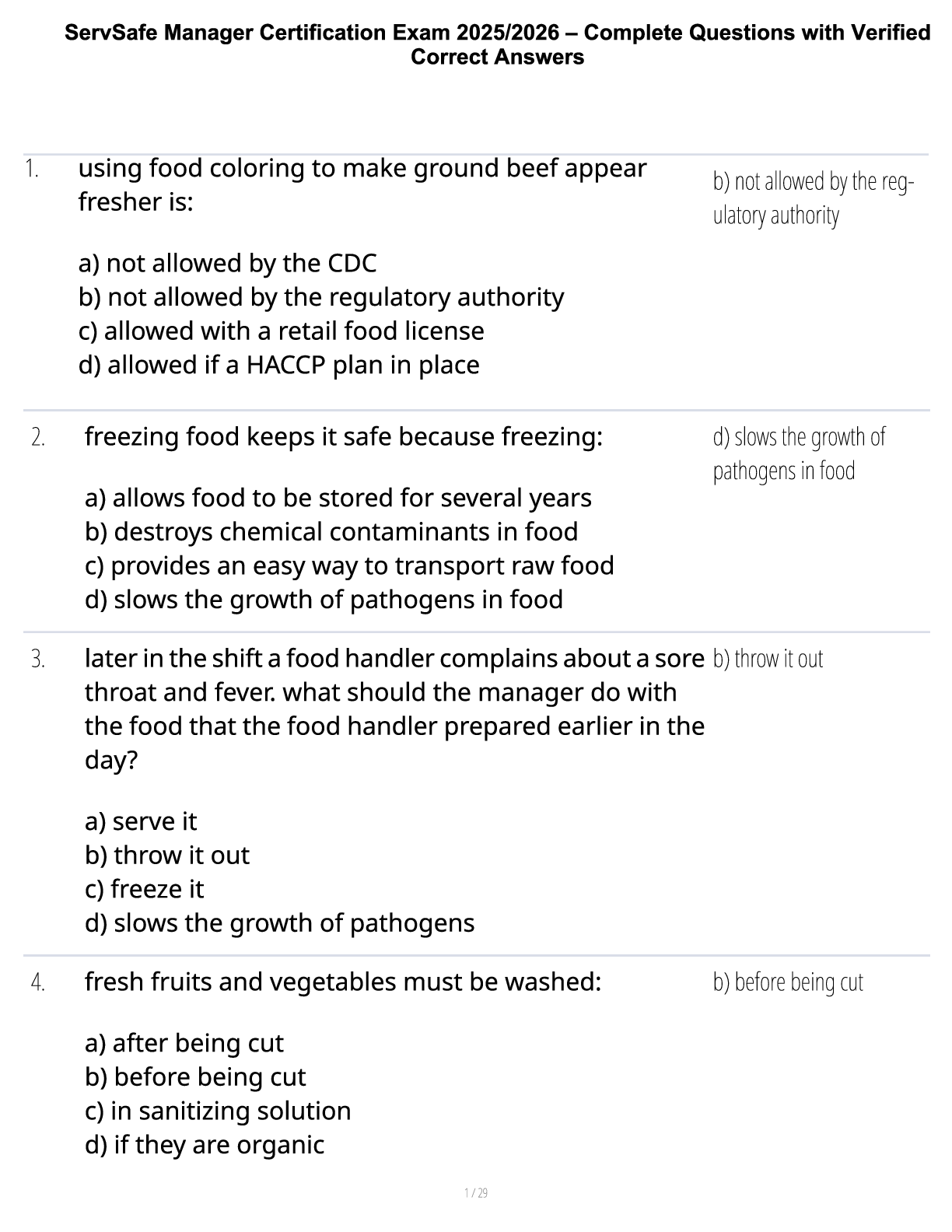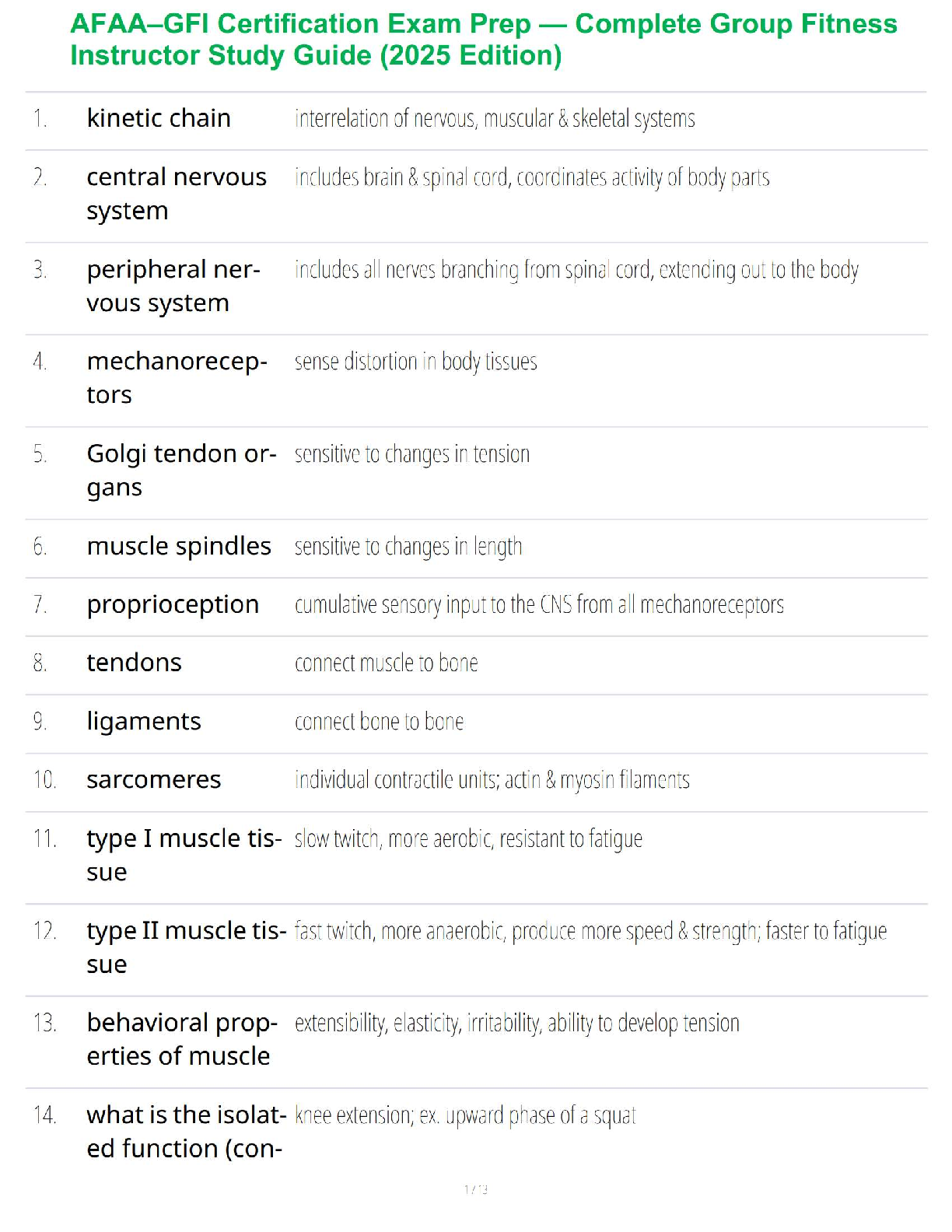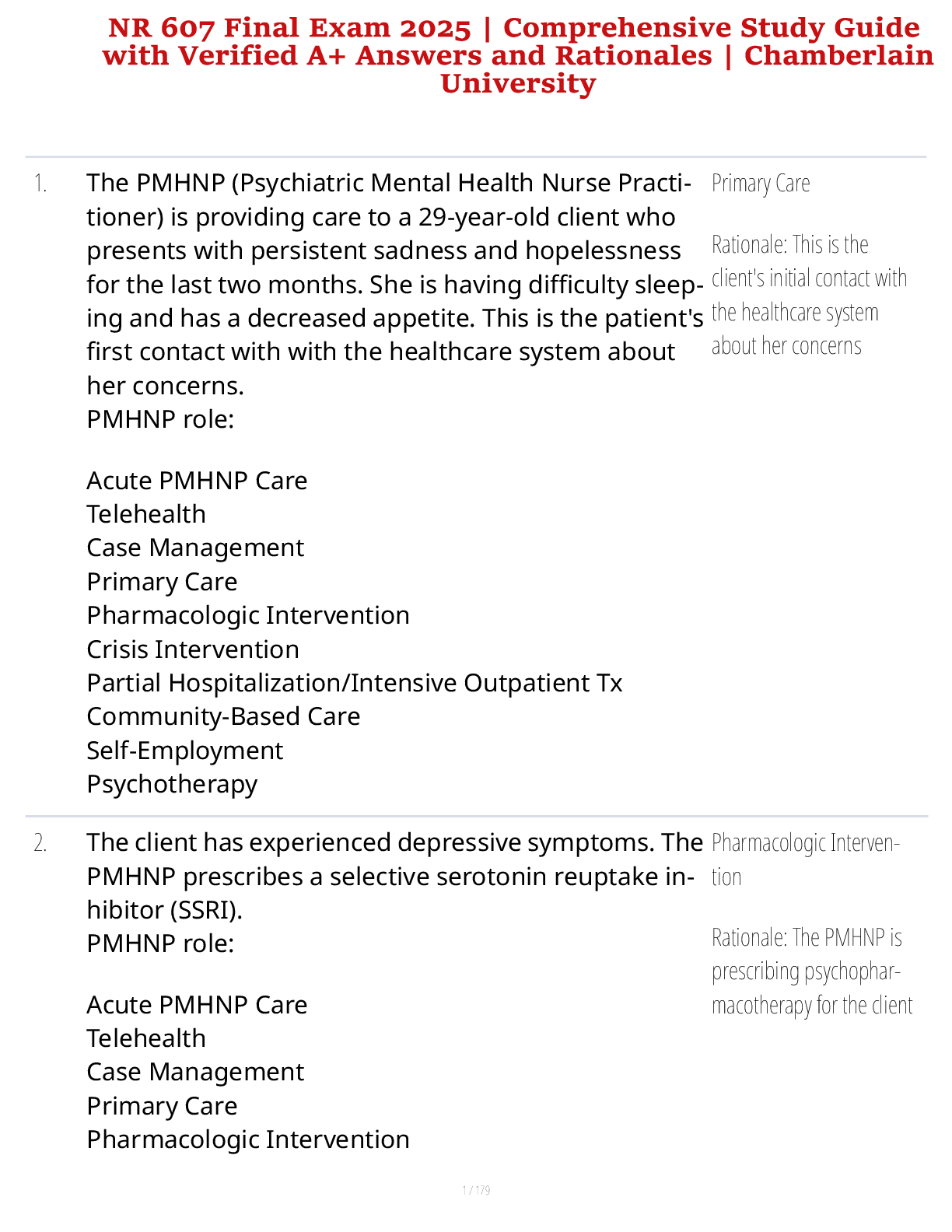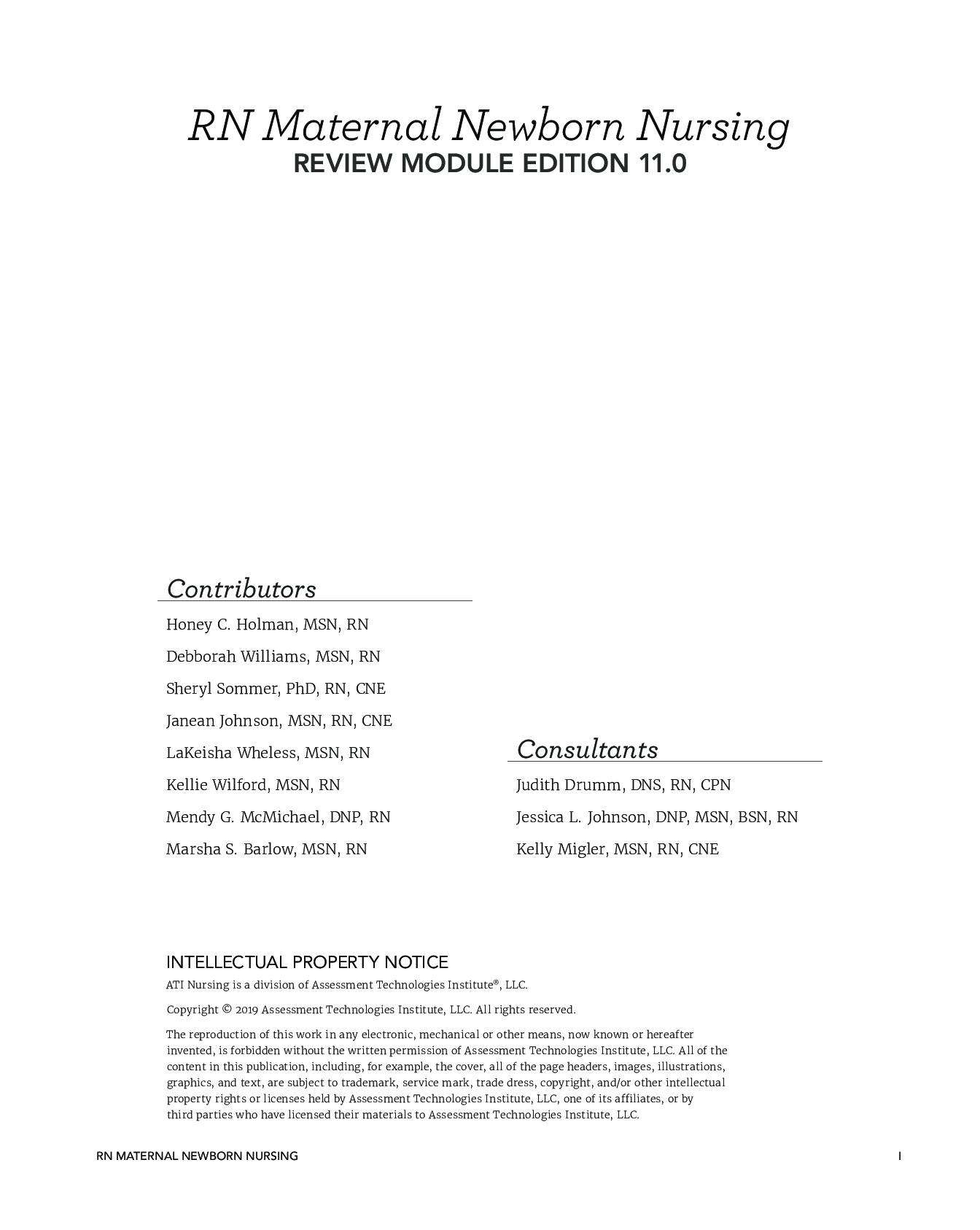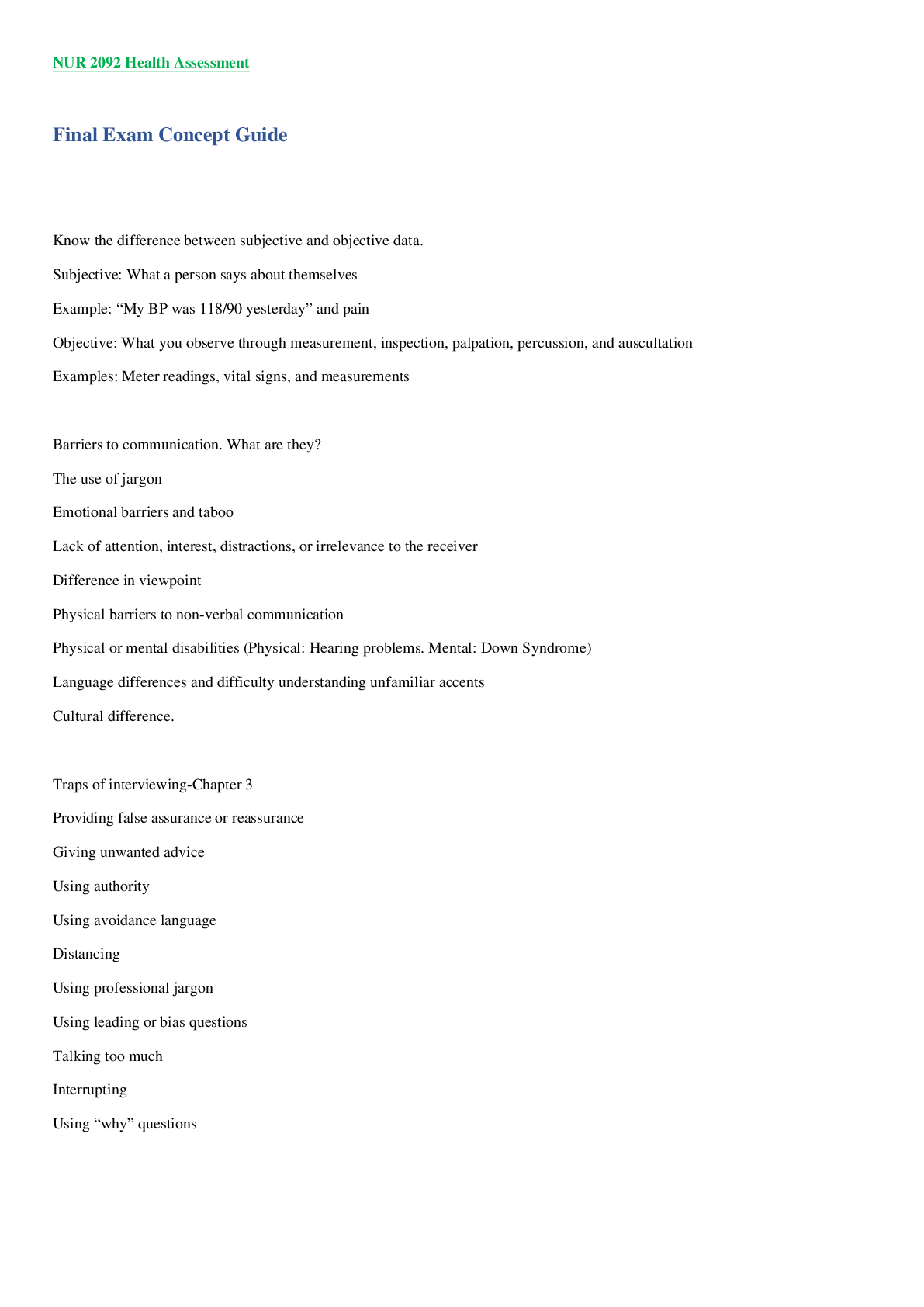Psychiatry > STUDY GUIDE > Psychiatric Mental Health Nursing Success (All)
Psychiatric Mental Health Nursing Success
Document Content and Description Below
This book is designed to assist the student nurse in being successful in nursing school and in taking examinations, particularly the NCLEX-RN examination for licensure as a registered nurse. Psychia ... tric/Mental Health Nursing Success: A Course Review Applying Critical Thinking to Test Taking focuses, as the title implies, on critical thinking as it pertains to test-taking skills for examinations in the psychiatric/mental health nursing field. It contains practice test questions found in review books, but it also provides important test-taking hints to help in analyzing questions and determining the correct answers. Like the other, books in Davis’s Success Series, this book focuses on how to use the thinking processes and test-taking skills in answering questions specifically addressed on the NCLEX-RN examination. Test-taking skills and hints are valuable, but the student and future test taker must remember that the most important aspect of taking any examination is to become knowledgeable about the subject matter the test will cover. There is no substitute for studying the material. GUIDELINES FOR USING THIS BOOK This book contains 16 practice tests and a final comprehensive examination. This introductory chapter on test taking focuses on guidelines for studying and preparing for an examination, specifics about the nature of the NCLEX-RN test and the types of questions contained in it, and approaches to analyzing the questions and determining the correct answer using the RACE model. The 16 practice tests that follow focus first on basic concepts of psychiatric/mental health nursing (Chapters 1 to 6) and then on psychiatric disorders as established by the Diagnostic and Statistical Manual of Mental Disorders, 4th edition, Text Revision (DSM-IV-TR) (Chapters 7 to 16). Each of these 16 tests is divided into two major sections—“Practice Questions” and “Practice Questions Answers and Rationales”—and subheadings within each of these larger sections help the student tailor review sessions to specific topics and the amount of time available for study. Keywords are listed at the start of each test. Different types of multiple-choice questions about basic psychiatric/mental health nursing concepts and the nursing care for psychiatric disorders help the test taker to identify specific content more easily. The answers to these questions, the explanations for the correct answers, and the reasons why other possible answer options are wrong or not the best choice reinforce the test taker’s knowledge and ability to discern subtle points in the question. Finally, the test-taking hints provide some clues and tips for answering the specific question. The “Comprehensive Examination” that concludes the book includes 100 questions covering all of the content addressed in the practice tests. Answers and rationales for these examination questions and test-taking hints are given. Chapter 4, “Concepts Related to Psychopharmacology,” deals with what the nursing student should know about the administration of psychiatric medications. This content is reinforced by psychopharmacology sections in each relevant disorder test that follows. The pharmacological treatment of psychiatric disorders is a crucial subject, so it has been given special emphasis in this book. 2 PSYCHIATRIC/MENTAL HEALTH NURSING SUCCESS PREPARING FOR LECTURE To prepare for attending a class on a specific topic, students should read the assignment in the textbook and prepare notes to take to class. The test taker should highlight any information he or she does not understand so that the information may be clarified during class or, if the instructor does not cover it in class, after the lecture. Writing a prep sheet while reading (studying) is very useful. A single sheet of paper divided into categories of information, as shown, should be sufficient for learning about most disease processes. If students cannot limit the information to one page, they probably are not being discriminatory when reading. The intention is not to rewrite the textbook, but to glean from the textbook the important, need-to-know information. Sample Prep Sheet Medical Diagnosis: Definition: Diagnostic Tests: Signs and Symptoms Nursing Interventions: (List normal values) (Include teaching) Procedures and Nursing Implications: Medical Interventions: Complete the prep sheet in one color ink. Take the prep sheet to class along with a pen with different color ink or a pencil and a highlighter. Highlight on the prep sheet whatever the instructor emphasizes during the lecture. Write in different color ink or with a pencil any information the instructor emphasizes in the lecture that you did not include on the prep sheet. After the lecture, reread the information in the textbook that was included in the lecture but not on your prep sheet. By using this method when studying for the exam, the test taker is able to identify the information obtained from the textbook and the information obtained in class. The information on the prep sheet that is highlighted represents information that the test taker thought was important from reading the textbook and that the instructor emphasized during the lecture. This is need-to-know information for the examination. Remember, however, that the instructor may not emphasize laboratory tests and values, but still expect the student to realize the importance of this information. The test taker should make the most of limited time by carrying completed prep sheets in a folder so that they can be reviewed any time there is a minute that is spent idly, such as during children’s sports practices or when waiting for an appointment. The prep sheets also should be carried to clinical assignments to use when caring for clients in the hospital. If students are prepared before attending class, they will find the lecture easier to understand and, as a result, will be more successful during examinations. Being prepared allows students to listen to the instructor and not sit in class trying to write every word from the overhead presentation. Test takers also should recognize the importance of the instructor’s hints during the lecture. The instructor may emphasize information by highlighting areas on overhead slides, by repeating information, or by emphasizing a particular fact. This usually means the instructor thinks the information is very important. Important information usually finds its way onto tests at some point. PREPARING FOR AN EXAMINATION There are several steps that the test taker should take in preparing for an examination— some during the course of the class and some immediately before the day of the test. Study, Identify Weaknesses, and Practice The test taker should plan to study 3 h [Show More]
Last updated: 2 years ago
Preview 1 out of 407 pages
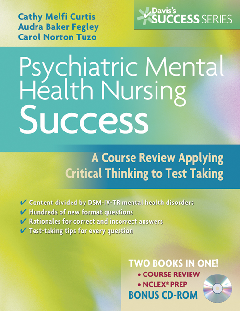
Buy this document to get the full access instantly
Instant Download Access after purchase
Buy NowInstant download
We Accept:

Reviews( 0 )
$12.00
Can't find what you want? Try our AI powered Search
Document information
Connected school, study & course
About the document
Uploaded On
Jan 30, 2023
Number of pages
407
Written in
All
Additional information
This document has been written for:
Uploaded
Jan 30, 2023
Downloads
0
Views
201

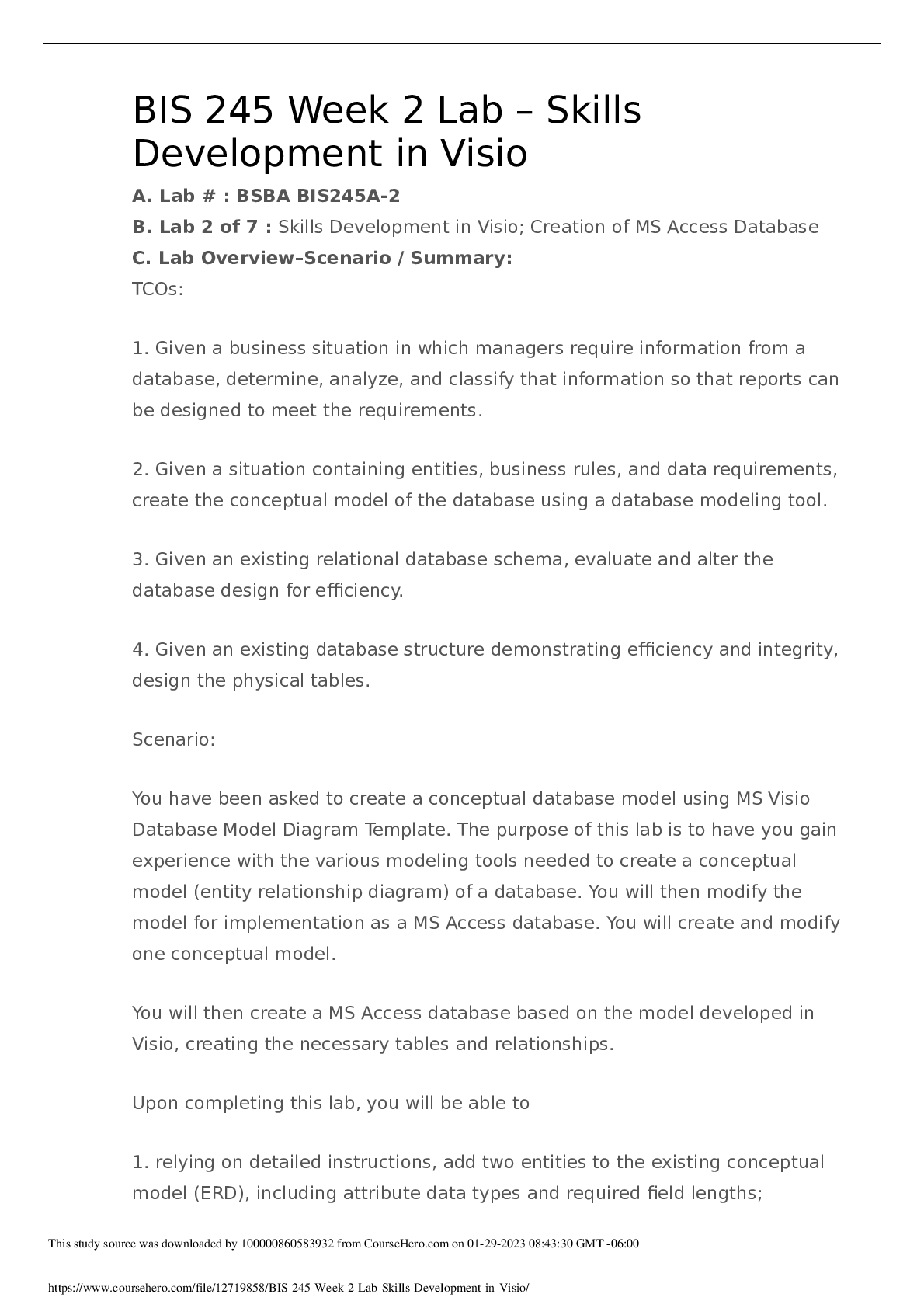

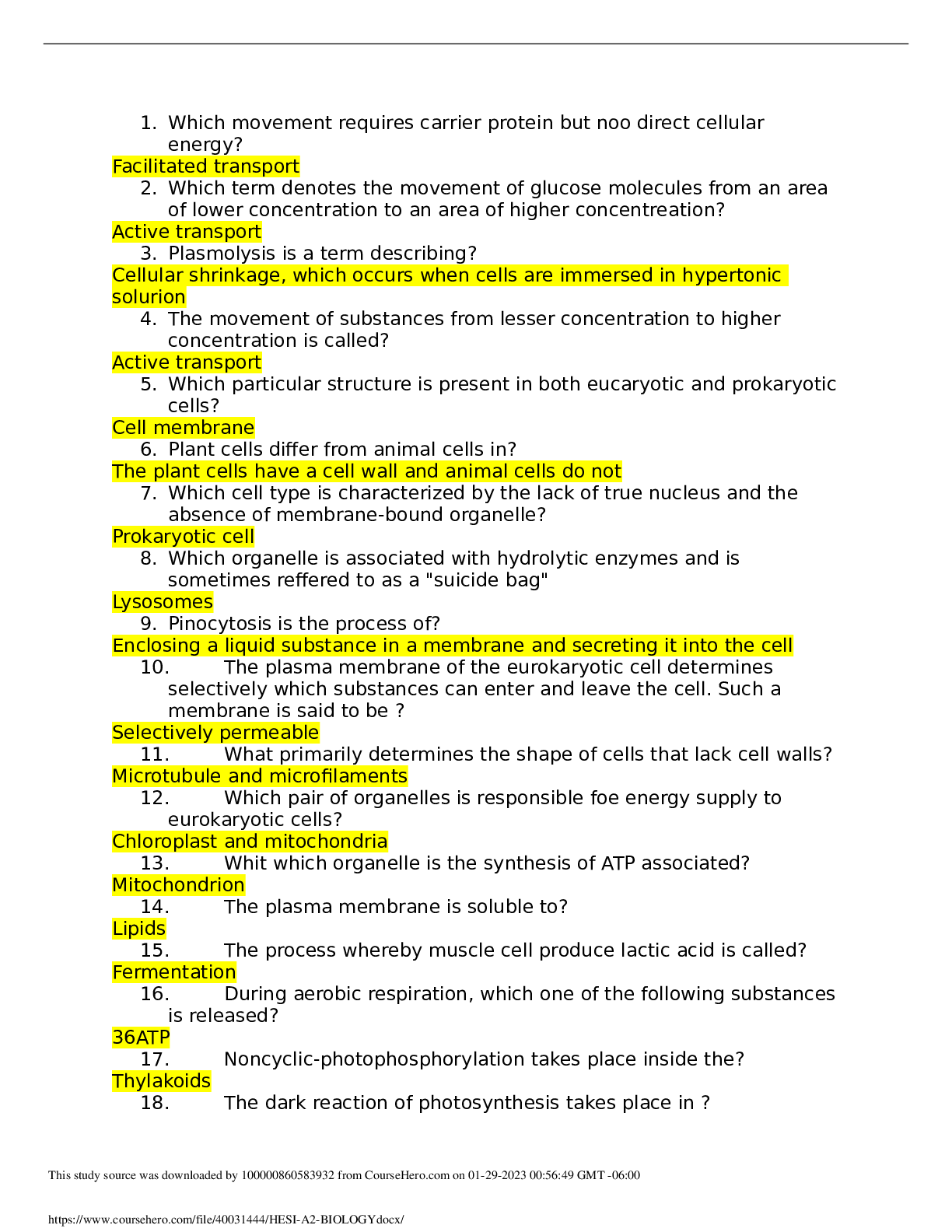




.png)



